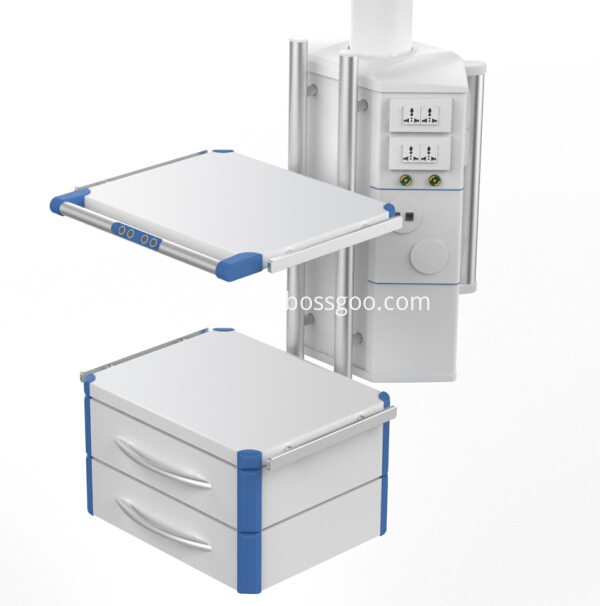On October 13, 2006, many farmers in Leting County, Hebei Province, presented with pregnant sows who refused to eat, wheezed, had trouble breathing, raised body temperature, bloody foaming nasal fluids, and sick pigs that could pose if they were not treated in time. The mortality rate is high. According to clinical symptoms, autopsy, and laboratory tests, the author was diagnosed with swine plague.
2 clinical symptoms
The sick pig is depressed, refuses to feed, typical canine posture, gasping, body temperature rises to 40°C to 42°C, visible mucous flushing, cyanosis, bleeding-colored foamed nasal fluid, difficulty in breathing, mouth stretching, non-stop coughing , The body's distal cyanosis, heart sound hyperthyroidism, irregular heart rate, duration of 2 to 7 days, the incidence rate of 30%, mortality rate of 40%.
3 necropsy changes
Good body condition, sensational upper middle class, full body and distal cyanosis after death, characteristic pathological changes are bleeding of the whole body serosa and subcutaneous tissue, a large amount of jelly-like cellulose slurry under the neck, and a large number of blood-colored foams from the nose and mouth In the liquid and trachea, the neck is red and swollen with plaques; the throat has bleeding points; the lungs are congested, blood stasis, and bleeding; the outer edges of the sharp leaves, heart lobes, and lobes have distinct hepatic and pancreatic regions. Variable area disease can sink to the bottom of the water, cutting out a large number of bloody fluids; systemic lymphadenopathy, hemorrhagic bleeding on the cut surface, especially hilar lymph nodes; kidneys with a bit of bleeding; pericardial effusion; stomach, intestine, bladder Bleeding; spleen bleeding.
4 laboratory diagnosis
4.1 Microscope
Liver and spleen smears from diseased and dead pigs were used for Wright's staining. See bipolar coloring bacteria.
4.2 Bacterial culture
Aseptically, the liver and spleen were inoculated with inoculation of MacConkey and blood agar medium plates, and the common broth was incubated at 37°C for 24 hours. The bacteria were not grown on the MacConkey medium; the wetted water droplets grew on the blood culture medium. Colonies are surrounded with no hemolysis and the broth is turbid.
4.3 Animal Testing
A total of 10 grams of liver and spleen were taken from the dead pigs to make a 10% suspension in saline. Four mice were divided into 2 groups of 2 mice each. In the experimental group, 0.3 ml of the above suspension was injected intraperitoneally, and the control group was injected with the same amount of physiological saline for 48 hours. The mice in the experimental group died 18 to 24 hours, whereas no abnormalities were observed in the control group. The livers and spleens of dead mice were taken for smear, and the two-pole colored bacilli were detected by Wright's staining microscope.
4.4 drug sensitivity test
The strains of the above isolates were tested for drug susceptibility according to the conventional drug sensitive paper method. Results The isolates were highly sensitive to ciprofloxacin hydrochloride and compound pefloxacin; to gentamicin medium-sensitivity; to penicillin, streptomycin, Ampicillin, kanamycin, chloramphenicol, tetracycline, erythromycin, doxycycline, cephalosporin, midamemycin, vancomycin, bacitracin, and cotrimoxazole are not sensitive.
In summary, it was diagnosed as swine plague.
5 treatment
Ciprofloxacin hydrochloride 25 mg per kilogram body weight, plus normal saline 1000 to 2000 ml, ear vein infusion, recovered after 5 days.
6 Summary
6.1 Pulmonary plague is also known as Pasteurellosis, commonly known as "locking throat madness" or "swollen neck ridge." It is an acute or sporadic and secondary infectious disease caused by a specific serotype of Pasteurella multocida. The acute cases presented with hemorrhagic sepsis, pharyngitis, and pneumonia. The chronic course is mainly manifested as chronic pneumonia with sporadic symptoms. It is often secondary to other diseases. Should be discovered in time, early treatment.
6.2 It is necessary to determine the treatment according to drug susceptibility test. Different medications in different regions, pregnancy sow medication does not affect the fetus, resulting in miscarriage.
6.3 The fundamental method of preventing this disease must implement the principle of "prevention first", eliminate or reduce all the adverse factors that reduce the pig's resistance, strengthen feeding management, and do a good job in veterinary hygiene to increase the resistance of the pig. Every year in spring and autumn, regular injections are made. In China, two kinds of bacterins are used. One is aluminum hydroxide formaldehyde bacterin of pigs' lung disease. After weaning, large and small pigs were injected subcutaneously with 5 ml. The immunity is produced 14 days after the injection. The immunization period is 6 months. Oral attenuated attenuated bacterin vaccine for lung epidemic disease, according to the head of the bottle stated in the bottle, diluted with water, mixed with feed or water to feed the pig. Easy to use, immunity period is 6 months.
Manual characteristics of arms outside the Dakota is in the large-scale distance away, more than any rotary joint 340ºmobile within a short degrees and anti-brake drift aerodynamic configuration can be based on your needs and easily moved to any district Operating Table, user-friendly, easy to operate. The double arms manual medical pendants is ideal for large and medium-sized operation room. Medical gas, power supply, networks and treatment apparatus output terminal carrying the mobile work platform system.

Double Arm Manual Medical Pendant
Double Arm Surgical Pendant,Double Arm Ceiling Pendant,Double Arm Hospital Pendant,Double Arm Cavascope Pendant
Shandong Lewin Medical Equipment Co., Ltd. , https://www.lewinmed.com